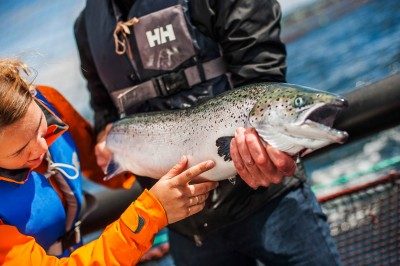The Norwegian Food Safety Authority has given the green light for sensor-equipped technology to automatically provide sea-lice counts at marine grow-outs in Norwegian waterways, it has been learned.
“To start, we’ll be opening for technology neutral management,” Inger Fyllingen, a senior advisor at the Authority, told SalmonBusiness.
New tech is on the march in aquaculture, and the time-consuming task of manually counting sea lice might soon be history. Several suppliers have developed technology to count lice using a camera: “The sensor sees more than people have the ability to,” the Web site of an original equipment manufacturer says.
“If your counting of lice can be automatic and it’s been approved by the Authority, then we welcome it,” Bjorg Mette Holmefjord Antonsen, manager at salmon-grower, Bolaks, told SalmonBusiness last week.
Whatever doubt might have lingered in some about the Food Safety body’s view on automated lice counts ought to now evaporate: “Should you discover a counting technique that’s trustworthy to adopt and meets our demands, then we’ll regard it positively,” Fyllingen said.
Hard to see
She said political leaders shouldn’t be laying down hindrances to technological gains, although she added that the new tech has to be as good as traditional methods.
“What I understand is that it’s still difficult to detect early-stage lice. To know when the smallest lice finds its mark is important in their (the salmon farmers’) own screening,” she added.
“We want to have a targeted approach in our oversight of the regualtions. If one can show and document that the automated counting methods safeguard as well (as manual methods), then we won’t maintain a rigid interpretation of today’s guidelines. The problem has been to bring forth a good, optical counting methodology. But, I believe that is right around the corner and might be found,” she said.

Positive surprise
Ivar Erdal is managing director at Econtone, a company with just such a lice-counting product. He’s positively surprised at the signals from the Authority.
“That’s definitely positive news,” Erdal said.
Asked how he views the challenge of detecting the smallest of sea lice, he said this: “Due to the test phase we’re now in, I can’t shout out results related to exactly that. But generally, I can say that, yes, the smaller the lice the harder it is to detect. That’s true whether you’re counting manually or automatically,” he said.


